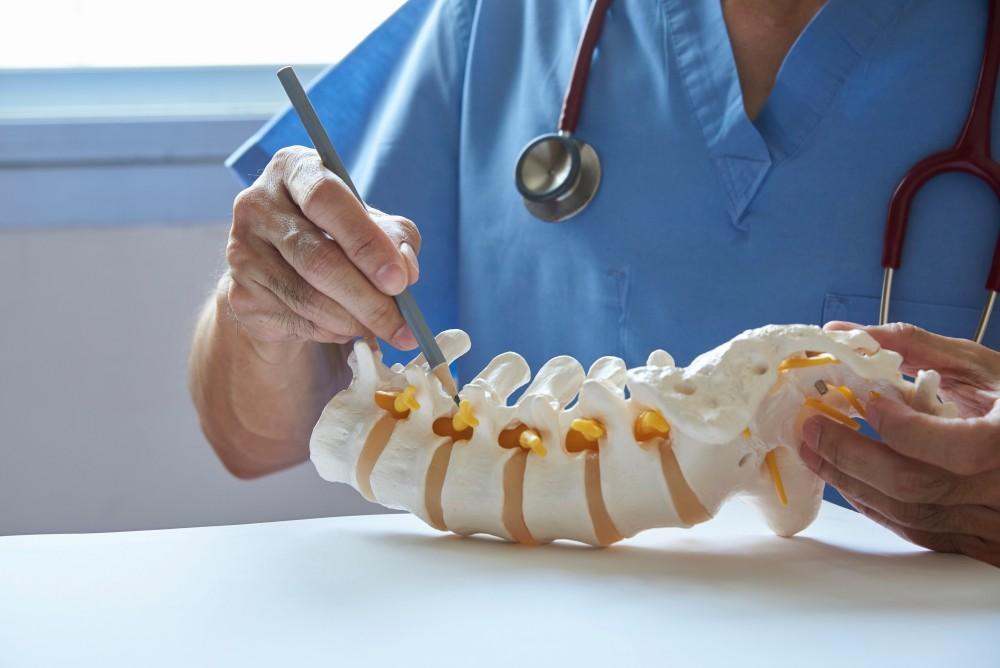
All About Degenerative Disc Disease: Risk Factors, Symptoms, and Treatment Options

Degenerative disc disease (DDD) isn’t really a disease, but, instead, it’s a spinal condition where wear-and-tear or other damage to an intervertebral disc leads to pain, including pain from a “pinched” or impinged-upon spinal nerve. The pain can be localized or spread along the nerve’s path into an extremity. It’s also true that not everyone with DDD ends up in pain.
At Vertrae®, with locations in Dayton and Springfield, Ohio, board-certified neurosurgeon Dr. Kamal R. Woods and his team specialize in conditions affecting the spine and its components, including degenerative disc disease, and they offer numerous surgical and nonsurgical treatment options. So you can better understand the condition, the team has put together this brief guide to discuss causes, symptoms, and treatments.
How your spine lines up
Your spine is your backbone, reaching from the base of your skull to your coccyx. It’s strong and stiff to allow you to stand up straight, yet it’s flexible enough for you to bend, flex, and twist. An adult spine contains 24 interlocking bones (vertebrae) separated by cushiony intervertebral discs that support your body’s weight and act as shock absorbers when you move.
The outer part of each disc, the annulus, is firm, while the inner material, the nucleus, is more gel-like. If the annulus tears due to an injury or the wear-and-tear from a lifetime of usage, the nucleus can ooze out and impinge upon spinal nerves, causing pain.
The vertebrae are held together by two small, bony protrusions top and bottom called facet joints, and the linked chain forms the spinal column, which surrounds and protects the spinal canal. The spinal cord runs through the canal, with peripheral nerves exiting the spine at specific locations. If disc material presses on a nerve root in the canal, the pain can radiate out along the nerve’s path to those regions, a condition called radiculopathy.
DDD can occur anywhere in the spine, but it’s most often found in the cervical (neck) or lumbar (lower back) regions since those areas move the most.
Risks for and symptoms of DDD
Disc degeneration generally starts in your 20s, but unless you have an acute injury, it may take decades before you feel the consequences. That makes the biggest risk factor for developing DDD getting older.
Not everyone with DDD experiences pain, and for those that do, pain levels vary between individuals. Pain is usually a low-level chronic type with intermittent episodes of more severe pain.
Other common symptoms include:
- Pain that occurs with bending, twisting, or lifting something heavy
- Back “seizes up,” becoming inflexible
- Perception that spine can’t support neck and head
- Muscle tension or muscle spasms
- Increased pain when sitting or standing for long periods or looking down at a phone or tablet (“tech neck”)
- Reduced pain when stretch the spine or adjust position frequently
- Decreased pain in certain positions: reclining or lying down with a pillow under the knees
If a degenerating disc has bulged into the spinal canal and pinched a spinal nerve, you’ll feel the characteristic hot, sharp, radiating pain of radiculopathy as the pain travels along the nerve’s path into the arms or legs.
A good example of lumbar radiculopathy is sciatica. Here, the disc material impinges on the sciatic nerve root, whose extension exits the lumbar spine at the L4-L5 and L5-S1 levels. The pain moves through your buttocks, down the outside of your leg, and even into the foot. The pain comes and goes, depending on your position.
Treatment options for DDD
If your condition isn’t advanced, Dr. Woods may recommend rest and limited activities for a short period of time. He may also recommend over-the-counter anti-inflammatories or prescription muscle relaxants to help with the pain. Physical therapy is a good option, too, as it teaches you stretching and strengthening exercises to take the pressure off the nerve.
The next level of treatment is therapeutic injections. These include:
- Epidural corticosteroid shots into the space around your spinal cord to relieve inflammation
- Nerve blocks, injecting pain-relieving medication directly into the affected nerve
- Trigger point injections, injecting pain-relieving medication into nearby muscle
If none of these work and you need surgery to address your pinched nerve, Dr. Woods has extensive experience performing many different spinal procedures, including minimally invasive and robotic options. Two common procedures for DDD include spinal fusion (joining of vertebrae) and artificial disc replacement.
If your back is hurting, you haven’t injured yourself, and you’re near or in middle age, chances are you may have degenerative disc disease. To get a proper diagnosis and effective treatment, give Vertrae® a call at either location to schedule a consultation with Dr. Woods, or book online with us today.
You Might Also Enjoy...


How to Alleviate Chronic Back Pain Without Surgery

5 Common Signs of a Compression Fracture

Using Your Own Platelet-Rich Plasma to Alleviate Your Back Pain

A Closer Look at Your Sacroiliac Joint

